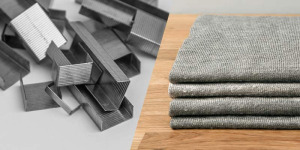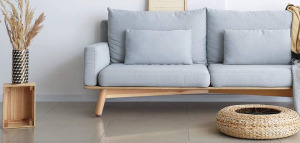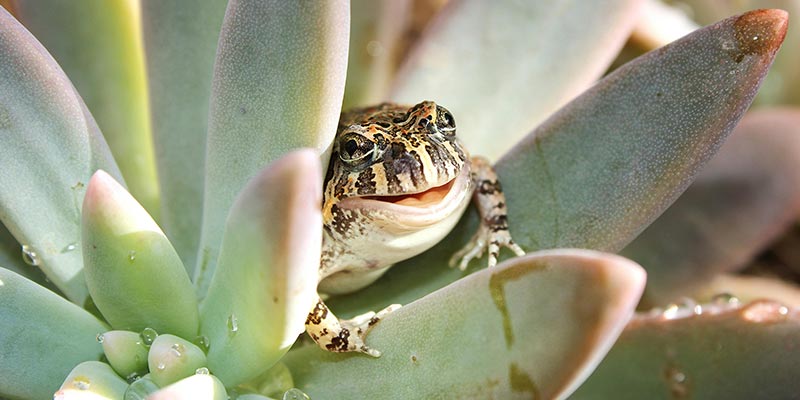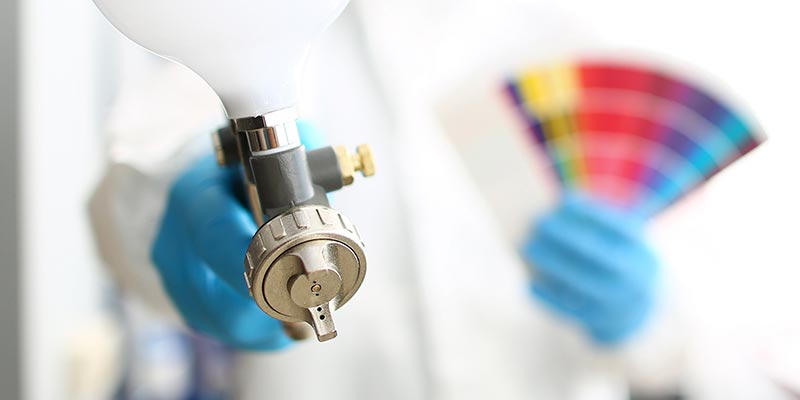In this article Sara discusses how safe it is to paint when pregnant, which house paints are safest to use for the health of mother and baby, and important safety precautions to take if you do find yourself needing to paint the house.

While I was pregnant with my daughter, it just so happened that we were building her new bedroom at the same time. As the resident painting expert in our home, I was lumped with painting her room. Normally that is something I wouldn’t mind, but being 6 months pregnant, the thought of handling primer and paint when pregnant made me a bit anxious.
Even worse, the walls were made of plywood, which meant that they needed to be primed with oil-based primer, to stop the tannins and oils from the timber seeping through the top coat. That meant even more fumes, solvents and other nasties than other paints.
Faced with little other choice, I eventually did it. I primed and painted her room, with a combination of time, a respiratory mask and lots of aeration. In hindsight, I shouldn’t have done it at all in that state, but my daughter is well and healthy now so luckily it worked out fine in the end.
To help other women assess the risks of painting while pregnant, I decided to write this post. This way you can judge whether you should paint when pregnant at all, and precautions to take if you do find yourself needing to paint.
Paint when pregnant overview
Can pregnant women paint?
When you’re pregnant, it is generally not recommended that you begin to repaint your entire home.
Ideally, any house painting and staining responsibilities should be shifted away from the expectant mother, to avoid any risk of harming the mother and bub. This harm could be caused by not only the stain, paint and chemicals themselves, but also from potential trips, slips and falls that may come from maneuvering rollers, sprayer and brushes in hard to reach places.
Another reason is because no paints can be considered 100% safe for pregnant women. Nevertheless, if there is a need to paint something, you should stay away from any type of paint that uses harsh solvents, such as oil-based primers and paints.
| Paint | Painting when Pregnant Safety |
|---|---|
| Oil paints | LEAST SAFE – DO NOT USE Vapors cause headaches, nausea, dizziness Toluene may cause birth defects |
| Acrylic or Latex paints | MODERATELY SAFE Solvents including glycol and ether may harm fetus and mother-to-be |
| Zero VOC paints | MOST SAFE Not 100% safe, but best option available |
Paint when Pregnant Safety: Oil Paints
One of the worst types of paints to use while pregnant is oil-based paints. Expectant mothers should avoid oil paint when pregnant wherever possible.
Oil paints use some of the harshest solvents of all paints other than epoxides. The paint itself when curing gives off a vapor that contains volatile organic compounds. For a healthy person, the inhalation of too much of this vapor can result in headaches, nausea, fatigue, as well as dizziness. (Source: Baby Center and personal experience).
The side-effects of oil paint on pregnant women can be even worse. Studies have found that paints containing large amounts of toluene are also known to cause defects in developing babies similar to that of alcohol syndrome. Toluene poisoning is not something to brush off.
By way of example, my mother used to do a lot of fine art painting indoors using oil paints when I was a young child. She started to experience hallucinations and very strange behavior, which the doctors pinpointed to toluene poisoning, caused by her oil paints and solvents. When she gave up oil painting, the hallucinations and other symptoms disappeared. So, yes, toluene poisoning is a real thing.
Painting when Pregnant Safety: Acrylic or Latex Paints
The most common type of paint used in the home is either acrylic or latex. These water-based paints are considered to be safer when compared to oil-based alternatives. However, even water-based paints can contain solvents that pose health risks to developing fetuses. These paints contain solvents like glycol, ether, ethylene, and biocides. All of these are known to cause potential risks for both the developing baby and the mommy-to-be.
Paint while Pregnant Safety: Zero VOC Paints
More and more paints these days are being marketed as having zero volatile compounds. These zero VOC paints are considered to be the best choice for pregnant women. But a word of caution, because not all of these paints are actually free of volatile chemicals. The reason for this is that some pigments used in the paint, contain VOCs. While zero VOC paints are definitely the best option for pregnant women, they cannot be considered 100% safe to use while pregnant.
How to Paint when Pregnant: Safety Precautions
While we suggest avoiding painting while pregnant wherever possible, if there is no other option but to paint, pregnant women should conform to the following safety precautions. (Source: The Bump).
While painting, you need to aim to reduce your absorption of any volatile chemicals through breathing the vapors or by absorption through the skin. So, you need to avoid breathing the fumes and touching paint. Keep in mind that the vapors can also stick to your hair.
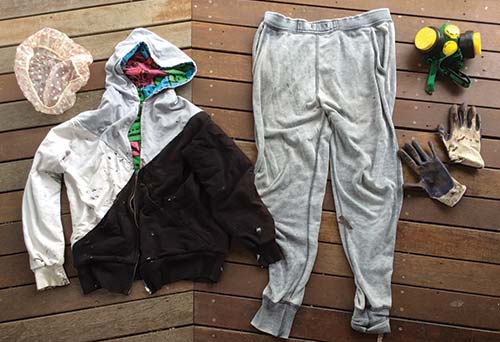
Wear Coveralls
Start by wearing coveralls at all times. You need to cover all of your skin and this includes wearing long sleeves, pants, gloves, and even a hoodie or shower cap. If you do happen to get any paint on exposed skin, stop what you are doing and immediately wash the area with soap and water. The quicker you can get the paint off the skin, the less likely that your skin will absorb any volatile chemicals.
Wear A Mask
They are not comfortable by far, but when painting always remember to wear a mask or respirator. While there are many options to choose from, make sure to wear something that has been approved to provide protection against paint fumes. While they will work great to prevent the inhalation of most of the volatile chemicals, if you start feeling nauseous or dizzy, it’s important that you leave the area straight away and get fresh air.
Provide Good Ventilation
Whenever possible, open up all of the windows and make sure you have plenty of air circulation so that the fumes from the paint do not linger too long. Set up a fan if you have one, to help the air flow. The faster you can get the fumes out of the area, the safer it is. As always, if you start feeling nauseous or dizzy, get out of the area immediately.
Avoid Lead-Based Paints
Since 1978, lead-based paint has been banned from use around the home. However, that does not mean that lead-based paint is not still available. Depending on your location it may still be possible to find lead-based paints. You should avoid them at all costs. While newer homes use lead-free paints, many older homes still have lead-based paints in the underlying layers. Before starting any project on an older home, contact a professional to make sure that your home is free of any lead-based paint.
No Food or Drinks
It’s understandable that while you are pregnant, you want a steady supply of food and drinks nearby. However, you need to keep them out of the room that you are painting in. Even if you don’t get the paint inside them directly, they can still become contaminated simply by the vapors. Beverages can absorb harmful chemicals from the air, and that can be dangerous for the developing baby.
Watch That Center of Gravity
Of course, always remember that while you are pregnant your center of gravity is different. Pregnant women tend to lose their balance more often, because of this shift in balance. As a result, it is highly recommended that you only paint up to the point that you can reach without a ladder. If a ladder is necessary, ask for help from someone else to paint those areas.
Take a Shower When Finished
Always remember to wash up yourself whenever you are finished. Even if you did not splatter a single drop of paint on yourself, take a long shower to wash your hair and body. While you were painting, your skin and hair were exposed to the fumes, and they can still be absorbed into the body long after you have left the room. By washing up afterward, you are able to rinse away any dangerous chemicals that may pose a risk to yourself or the developing baby.
Ask Someone Else to Clean Up
This is not just about taking advantage of having someone else do the dirty work for you while pregnant! From personal experience, I have found that cleaning up brushes and rollers is the time when you are at most risk of getting paint and solvent on your hands. Ask someone else to clean up the paint brushes and paint roller for you, to avoid getting too close to the paint, or be prepared to throw them in the trash when you’re done.
Final Thoughts on Painting While Pregnant
Despite all the well-meaning advice that tells us we shouldn’t paint while pregnant, there are still times when we might be faced with painting anyway. Perhaps there is an urgent project that needs finishing (like the baby’s room and furniture) and there is no-one else around to help, you’re a control freak and don’t want to hand over the work, or you simply enjoy painting.
If you are unable to avoid painting, my take-home suggestions are:
- Use zero VOC paints, or water-based paints.
- Cover yourself with full-length clothes and gloves to avoid contact with the paint.
- Use a respirator avoid breathing in fumes.
- Wear a hood, beanie or cap prevent your hair from absorbing paint vapors.
- Avoid climbing ladders or chairs to reach high spots.
- Buy disposable paint brushes or roller heads that you can throw in the garbage afterwards, so you don’t get paint on your hands while cleaning.
- Open a window and turn on a fan while painting to circulate the air, even if it’s cold or rainy.
- Take regular breaks for fresh air and rest.
I hope you’ve found this guide useful, and help you take care while handling and using paint when pregnant and around young children.
Author
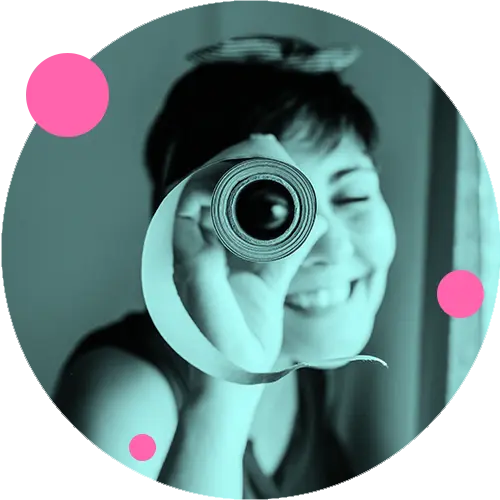
Hey, I’m Sara, co-owner of NestKoo! I’m a graphic designer and professionally trained fine artist, with a Bachelor of Arts (Fine Art) majoring in Painting. I love being close to nature, sustainable living and bringing new life to old things. My specialty in NestKoo is DIY house painting, upholstery and furniture upcycling, where I bring my skills in fine art painting and contemporary design together into a practical home DIY context.
View all posts


